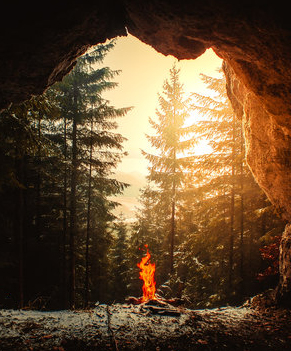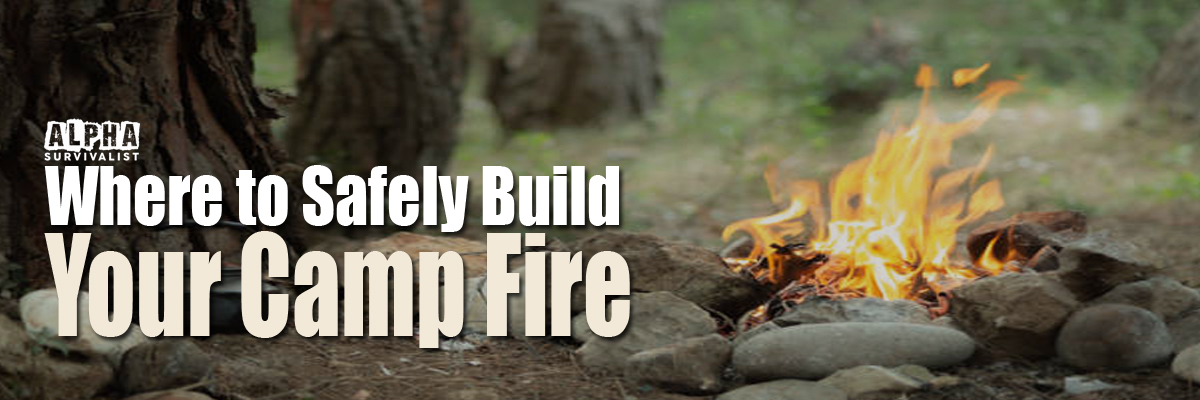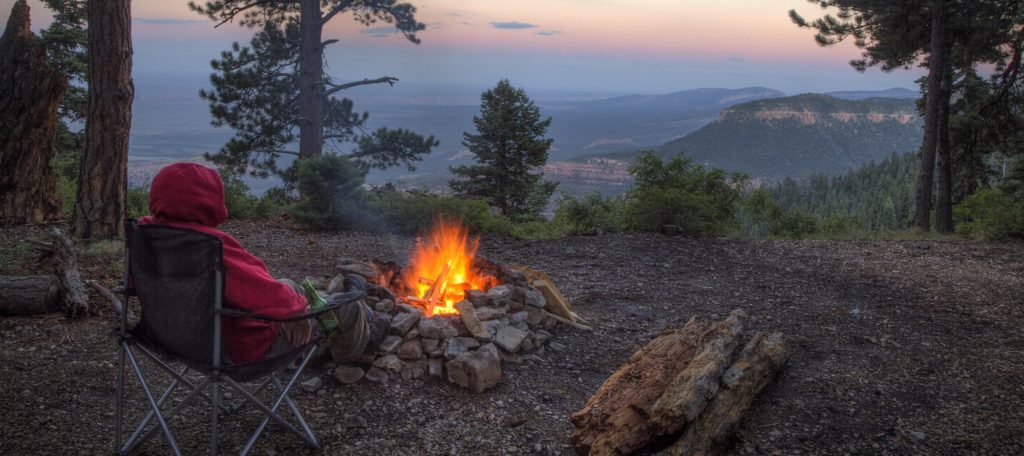Most people are aware that there are several steps to building a campfire. You need to gather together some kindling and logs, find some tinder, and you must ALSO have some way of starting your fire. However, the most commonly overlooked part of the whole fire making process, is knowing where to safely build your camp fire.
Not every location is suitable for building a fire. Some locations are actually pretty dangerous!
In this short article, we will tell you how to choose the best location in which to build your campfire and which locations you should (almost) always avoid.
How to Choose Where to Safely Build Your Camp Fire
When choosing a location for your campfire there are some things you should look for.
- You want to be on level ground with adequate drainage, however, you also want to have protection from the wind.
- If possible, find an area that offers natural shelter like a rock outcrop or depression.
- You should also look for trees that are not too dense but will provide adequate camouflage for your fire.
- The key thing to look for is an area that will allow you to build your fire without posing any danger of the flames spreading into the surrounding environment.
- A safe spot would be on dirt or sand, with nothing flammable within ten feet.
- Avoid areas that are too low or that could potentially flood when it rains.
Where NOT to Build Your Fire
Ideally, you want to build your fire at least 15 feet (5 meters) away from your shelter. However, this may not always be possible and will depend on your location.
You should locate your campfire well away from overhanging branches and other potentially flammable debris which could ignite above you, or fall into the fire.
If you are building a tarp or tent-style shelter, be sure to put it upwind of your fire if possible. If the prevailing winds are westerly or southwesterly like they are in much of North America, then it makes sense to build the fire east of the shelter so that embers don’t blow toward it. You do want your shelter going up in flames!
If you are camping in an area where there is a high risk of forest fires, avoid building your fire directly on the ground. Put it on dirt or sand to keep it from spreading up into the brush. You should also try to use small pieces of wood that will burn completely because bigger chunks may smolder for hours after the flames have burnt down.
Concerning Fire Safety
Before you begin building your campfire, you need to make sure that it is legal to do so in the area where you are. If possible, check with park rangers before starting your trip and ask them if there are any regulations you need to know about regarding campfires. Some national parks will not allow open fires without a special permit while others restrict the size of the fire. It is also a good idea to find out if there are any times of the year when fires are prohibited.
Many locales such as parks and forests will provide designated fire pits where you can build your campfire safely. These sites may not be located in the most convenient spots, but they offer windbreaks and other safety features that make them far superior to building a fire on one’s own.
Why Building a Fire in a Cave or Under an Overhanging Rock is a Bad Idea

Although it may seem like the ideal place to have your fire the heat created by a fire built directly underneath an overhanging rock could cause the rock to crack and break off, possibly falling onto your fire. Or, worse still, on top of you!
Caves are especially dangerous when it comes to fires because there is often a lack of ventilation inside a cave. No ventilation means there is a high risk of smoke inhalation that can lead to carbon monoxide poisoning.
Caves may seem like good places to hide your fire from the wind but this would be unwise given the fact that there is no air exchange outside of the cave which means fires build up quickly without proper ventilation.
Caves may not provide sufficient insulation during colder temperatures either, so you should always find another type of shelter to build your fire.
If you do choose to build a fire in a cave it should only be something small like a cooking stove with small pieces of dry wood being burned slowly to prevent smoke from being produced at all.
Summing up…Where to Safely Build Your Camp Fire
Okay, this is a prepper site and I understand that should the SHTF and the world gets turned upside down, any rules and regulations regarding outdoor campfires, like so many other rules, will no longer apply. However, awareness of the rules of fire safety will still be extremely important even if there is no-one left to enforce them.
Permits may not be needed anymore, but you still have a duty to ensure your own safety and that of those who are with you.
So, regardless if you’re facing an impending apocalypse and all about you are losing their s***, you should still practice good fire safety and awareness at all times!


